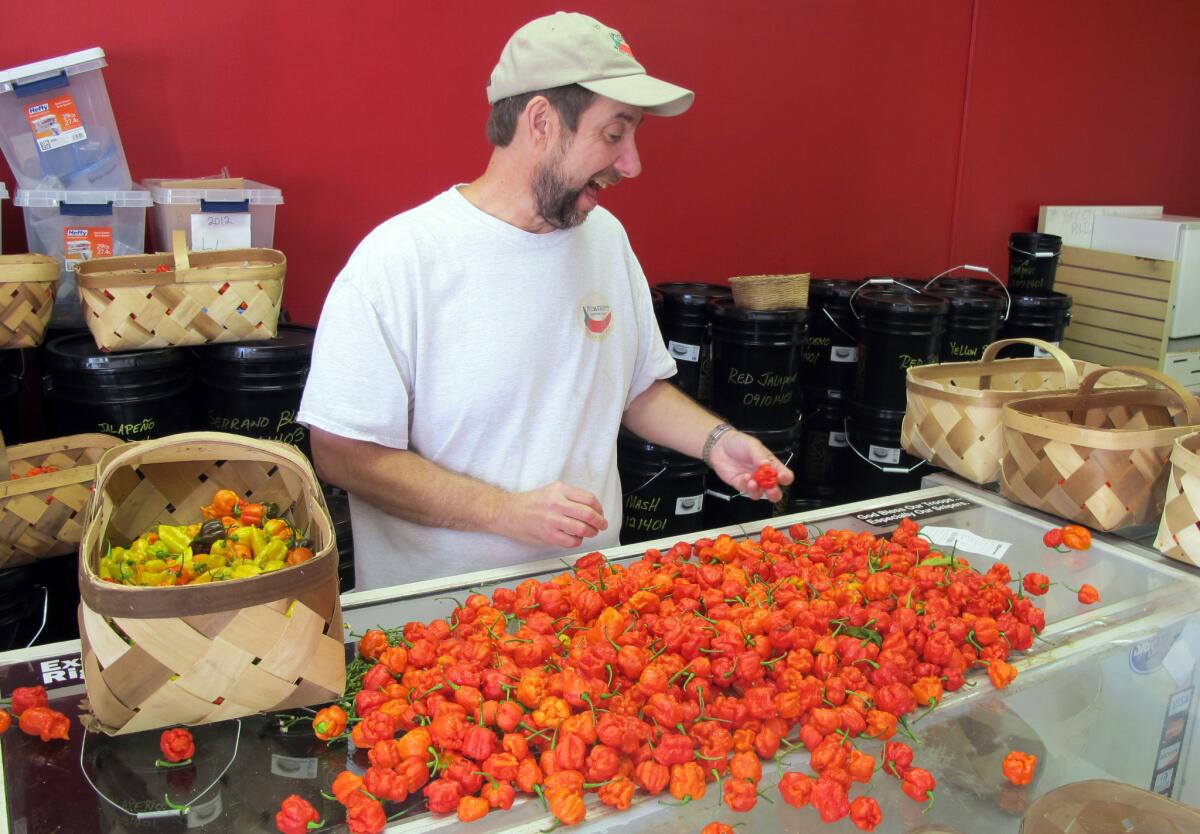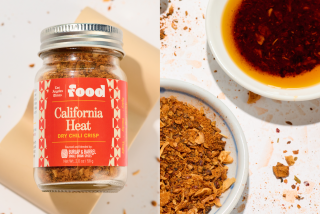World’s hottest pepper hits 2.2 million Scoville heat units

Smokin’ Ed Currie, owner of the PuckerButt Pepper Co. in Fort Mill, S.C., sorts samples of Smokin’ Ed’s Carolina Reaper, named by Guinness World Records as the word’s hottest chile pepper.
Until recently, the Trinidad Moruga Scorpion was known as the world’s hottest chile pepper. But according to the Guinness Book of World Records last month, it’s now the Carolina Reaper grown by Ed Currie of PuckerButt Pepper Co. in South Carolina.
The pepper rates an average of 1,569,300 Scoville heat units, as tested by Winthrop University in South Carolina throughout 2012, says the Guinness entry.
A story by the Associated Press says the record is for the hottest batch of Currie’s peppers tested, code named HP22B, which stands for “Higher Power, Pot No. 22, Plant B.” The hottest individual Carolina Reaper came in at 2.2 million Scoville heat units.
Last year, New Mexico State University’s Chile Pepper Institute named the Trinidad Moruga Scorpion the hottest chile in the world, with a mean of more than 1.2 million Scoville heat units and individual plants with a heat of more than 2 million units.
In comparison, a Bhut Jolokia or Trinidad Scorpion Butch T pepper can reach about 1.5 million Scoville units. Bird’s eye chiles can hit about 100,000 Scoville units, and a regular jalapeno about 8,000 units. The AP says pepper spray comes in at about 2 million Scoville units.
Currie sells Carolina Reaper seeds and hot sauces, dubbed I Dare You Stupit and Purgatory sauce, on his PuckerButt Pepper website.
ALSO:
4 great Sichuan restaurants in San Gabriel Valley
‘Tartine Book No. 3’ is a modern trip through ancient grains
More to Read
Eat your way across L.A.
Get our weekly Tasting Notes newsletter for reviews, news and more.
You may occasionally receive promotional content from the Los Angeles Times.










